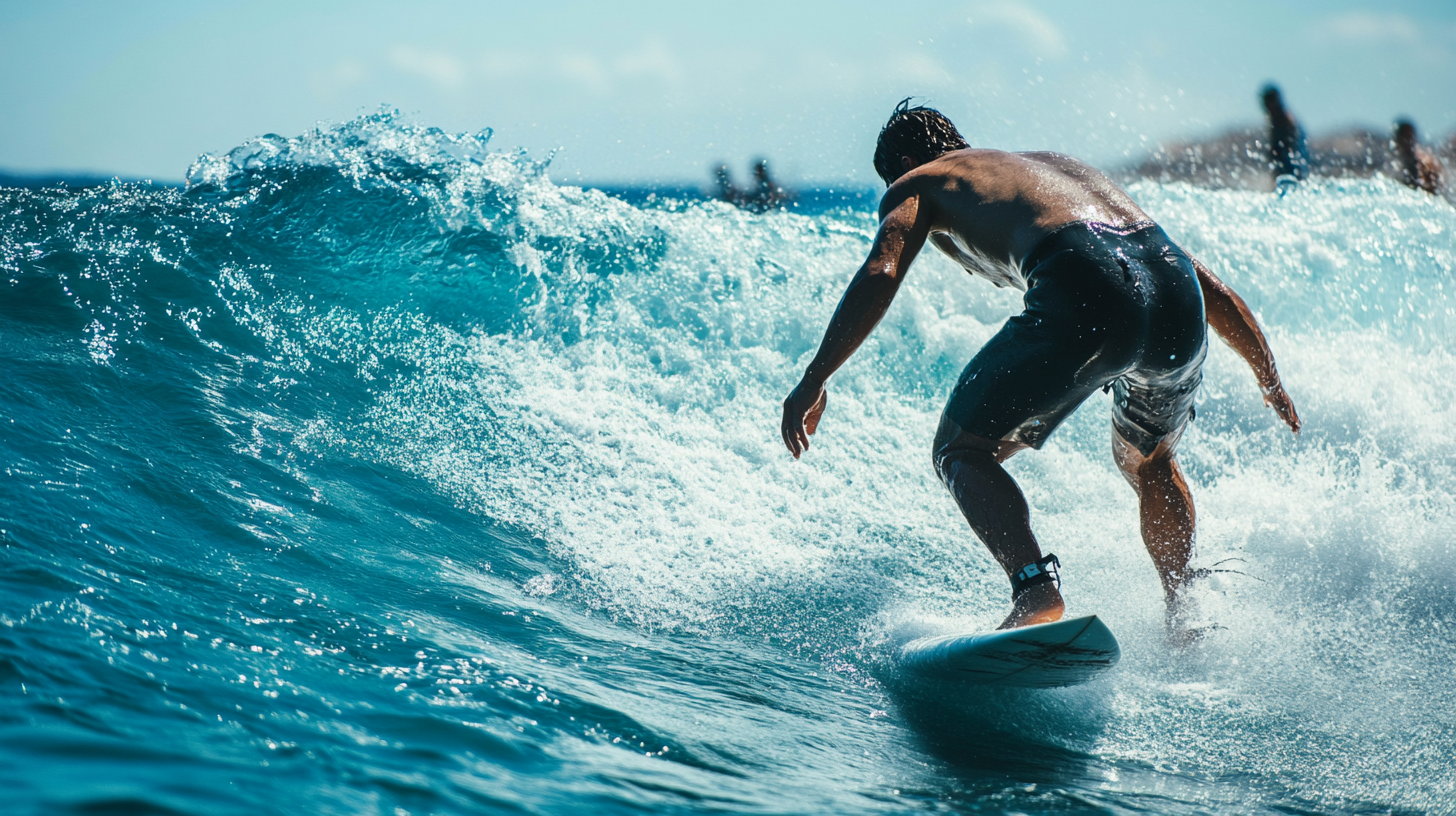

Shark attack details and victim’s condition
A 61-year-old man from Hawaii is currently recovering after a harrowing encounter with a shark while surfing off the coast of Oahu. The incident occurred in the early morning hours, a time when many surfers take advantage of the calmer waters. According to local authorities, the man was approximately 200 metres from shore when the shark attacked, biting him on the leg.
Witnesses on the beach reported seeing the man struggle to fend off the shark before managing to paddle back to shore. Lifeguards and bystanders quickly came to his aid, applying a tourniquet to his leg to control the bleeding until paramedics arrived. He was rushed to a nearby hospital, where he underwent emergency surgery. Medical staff have since confirmed that the man is in stable condition and is expected to make a full recovery, though he will require extensive rehabilitation.
Officials have not yet confirmed the species of shark involved in the attack, but experts believe it may have been a tiger shark, which is commonly found in Hawaiian waters. The beach was temporarily closed following the incident, and authorities are continuing to monitor the area for any further shark activity.
Seasonal increase in shark encounters
Shark encounters tend to rise during certain times of the year, and experts have noted that the current period is one of heightened activity. Warmer waters, increased ocean activity, and the migration patterns of marine life all contribute to this seasonal spike. In Hawaii, as well as in other coastal regions, the months between late spring and early autumn often see a surge in shark sightings and interactions. This is largely due to the fact that many species of sharks, including tiger sharks, are more active in warmer waters and tend to come closer to shore during these months in search of food.
Additionally, the increase in human activity in the water during these months—whether for surfing, swimming, or other recreational activities—can lead to more frequent encounters. Surfers, in particular, are at a higher risk as they spend extended periods of time in deeper waters, often during early morning or late afternoon hours when sharks are most active. The combination of more people in the water and the natural behaviour of sharks during this time creates a perfect storm for potential interactions.
Experts also point out that certain environmental factors, such as changes in water temperature, currents, and the availability of prey, can influence shark behaviour. For instance, an abundance of fish or other marine animals near the shore can attract sharks closer to popular swimming and surfing areas. While shark attacks remain rare, the seasonal increase in encounters serves as a reminder for ocean-goers to remain vigilant and take precautions when entering the water.
Expert advice on avoiding shark interactions
Experts recommend several strategies to reduce the risk of shark interactions, particularly during periods of heightened activity. One of the most important pieces of advice is to avoid swimming or surfing during dawn and dusk, as these are peak feeding times for many shark species. Sharks are more active in low-light conditions, and the reduced visibility can make it harder for them to distinguish between prey and humans.
Another key recommendation is to avoid areas where sharks are known to frequent. This includes staying away from areas near river mouths, where runoff can attract fish and, in turn, sharks. Similarly, avoiding areas with large schools of fish, seals, or other marine animals is crucial, as these are natural prey for sharks. Experts also advise against entering the water if you have any open wounds or are bleeding, as sharks have an acute sense of smell and can detect blood from great distances.
For surfers, wearing a wetsuit or rash guard in darker colours can help reduce the chances of attracting a shark. Bright or contrasting colours, as well as shiny jewellery, can resemble the appearance of fish scales, potentially drawing unwanted attention. Additionally, staying in groups is always safer than surfing alone, as sharks are less likely to approach larger groups of people.
Experts also stress the importance of paying attention to local warnings and beach closures. If authorities have closed a beach due to shark sightings or recent activity, it’s essential to respect these closures and avoid entering the water. Lifeguards and local officials are often the first to receive reports of shark activity, and their guidance can be crucial in preventing dangerous encounters.
If you do encounter a shark, experts advise remaining calm and avoiding sudden movements. Panicking or splashing can mimic the behaviour of prey and may provoke an attack. Instead, try to maintain eye contact with the shark and slowly back away towards the shore or your surfboard. If a shark does become aggressive, using your surfboard or any nearby object to create a barrier between yourself and the animal can help protect you.
Shark activity patterns during seasonal changes
Sharks, mate, they’re not just cruising around aimlessly. Their movements are pretty predictable, especially when the seasons change. Around this time of year, warmer waters bring in more fish, and where there’s fish, there’s sharks. It’s like ringing the dinner bell for them. In Hawaii, and even along our own Aussie coastlines, shark activity tends to spike as they follow their food sources closer to shore.
During the warmer months, you’ll see more sharks hanging around popular surf spots and fishing areas. They’re not out to get you, but they’re definitely more active. It’s all about the water temperature and the migration of their prey. So, if you’re out there chasing waves or casting a line, just remember—you’re not the only one looking for a good feed.
“The ocean’s a big place, but when the fish come in, so do the sharks. It’s just nature doing its thing.”
And while we’re on the topic, dusk and dawn are prime feeding times for sharks. They’re more likely to be on the hunt when visibility is low, so maybe give those early morning or late arvo sessions a miss if you’re keen to avoid an unwanted encounter.
Safety tips for avoiding shark encounters
If you’re planning to hit the water, there are a few things you can do to keep yourself off the shark’s menu. First off, avoid swimming or surfing near schools of fish or seals. Sharks aren’t picky eaters, and if they’re chasing a feed, you don’t want to be mistaken for part of the buffet.
Another tip? Stick to clear water. Sharks rely on their senses to hunt, and murky water makes it harder for them to tell the difference between a tasty fish and a human leg. Plus, it’s just easier to spot them if the water’s clear. If you can’t see your toes, maybe it’s time to head back to shore.
And here’s a classic: don’t swim alone. Sharks are less likely to approach a group, so bring a mate or two. It’s not just safer, it’s more fun. Also, steer clear of wearing shiny jewellery. To a shark, that glint in the water looks a lot like fish scales. You don’t want to be flashing a “come and get it” sign.
“If you’re sparkling like a disco ball, you might just catch the wrong kind of attention.”
Lastly, if you see a shark, stay calm. Easier said than done, right? But thrashing around will only make you look like a distressed fish, and that’s exactly what sharks are after. Slowly and smoothly make your way back to shore, keeping an eye on the shark without panicking. You’re in their territory, but that doesn’t mean you’re on the menu.

